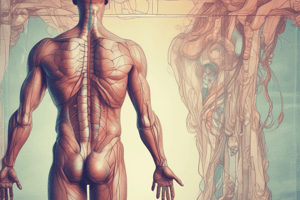Podcast
Questions and Answers
What are the mechanisms that maintain the sterility of the bladder, and how do they contribute to preventing Lower Urinary Tract Infections (UTIs)?
What are the mechanisms that maintain the sterility of the bladder, and how do they contribute to preventing Lower Urinary Tract Infections (UTIs)?
The mechanisms that maintain the sterility of the bladder include the physical barrier of the urethra, urine flow, antibacterial enzymes, and antibodies. These mechanisms contribute to preventing UTIs by preventing bacterial entry and multiplication in the bladder.
What are the risk factors that contribute to the development of Lower Urinary Tract Infections (UTIs), and how do they increase the susceptibility to infection?
What are the risk factors that contribute to the development of Lower Urinary Tract Infections (UTIs), and how do they increase the susceptibility to infection?
The risk factors that contribute to the development of UTIs include female gender, diabetes, pregnancy, neurologic disorders, gout, altered states caused by incomplete emptying of the bladder, decreased natural host defenses, inability to empty the bladder completely, inflammation or abrasion of the urethral mucosa, and instrumentation of the urinary tract. These risk factors increase the susceptibility to infection by compromising the bladder's defense mechanisms and allowing bacterial entry and multiplication.
How do obstructed urinary flow and urinary stasis contribute to the development of Lower Urinary Tract Infections (UTIs), and what are the potential consequences of untreated UTIs?
How do obstructed urinary flow and urinary stasis contribute to the development of Lower Urinary Tract Infections (UTIs), and what are the potential consequences of untreated UTIs?
Obstructed urinary flow and urinary stasis contribute to the development of UTIs by allowing bacterial growth and multiplication in the bladder. Untreated UTIs can lead to severe complications, including kidney damage, sepsis, and even death.
What are the clinical manifestations of an uncomplicated Lower Urinary Tract Infection (UTI), and how do they differ from those of an upper UTI?
What are the clinical manifestations of an uncomplicated Lower Urinary Tract Infection (UTI), and how do they differ from those of an upper UTI?
What is the significance of incontinence in the context of Lower Urinary Tract Infections (UTIs), and how does it impact patient quality of life?
What is the significance of incontinence in the context of Lower Urinary Tract Infections (UTIs), and how does it impact patient quality of life?
What are the nursing interventions that can be employed to prevent Lower Urinary Tract Infections (UTIs), and how do they contribute to improved patient outcomes?
What are the nursing interventions that can be employed to prevent Lower Urinary Tract Infections (UTIs), and how do they contribute to improved patient outcomes?
What are the diagnostic techniques used to confirm the diagnosis of a Lower Urinary Tract Infection (UTI), and how do they inform treatment decisions?
What are the diagnostic techniques used to confirm the diagnosis of a Lower Urinary Tract Infection (UTI), and how do they inform treatment decisions?
What are the treatment options for Lower Urinary Tract Infections (UTIs), and how do they vary depending on the severity of the infection and the patient's underlying health status?
What are the treatment options for Lower Urinary Tract Infections (UTIs), and how do they vary depending on the severity of the infection and the patient's underlying health status?
What are the consequences of untreated or poorly managed Lower Urinary Tract Infections (UTIs), and how can they be prevented?
What are the consequences of untreated or poorly managed Lower Urinary Tract Infections (UTIs), and how can they be prevented?
How do neurologic disorders and altered states caused by incomplete emptying of the bladder contribute to the development of Lower Urinary Tract Infections (UTIs)?
How do neurologic disorders and altered states caused by incomplete emptying of the bladder contribute to the development of Lower Urinary Tract Infections (UTIs)?
Flashcards are hidden until you start studying




